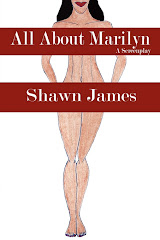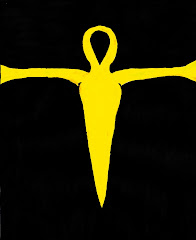For the past ten years I’ve been writing stories in two fiction categories: Contemporary Black Fiction and Black Fantasy Fiction. The first category I write for because it’s popular with readers, the second is a market is one I just have fun writing in. Currently Fantasy and Science fiction are an unexplored territory in the Black Book Market authors and publishers have focused on. (Walter Mosely’s Blue Light is still the only fantasy story I know of with Black characters in it.) I’ve written two manuscripts in both the black contemporary category and the fantasy category and I’m pleased with all four of them. However I’m more satisfied with my writing in the fantasy category. As a former comic fan I just love creating unique characters and unique worlds. From the business side it’s a blast developing books for a market most people in the publishing industry aren’t even thinking about. I feel like I’m getting in on the ground floor of a new trend.
In my eyes I see myself as a pioneer writing in the fantasy genre. It was disappointing for
me to learn For every Rod Serling, Peter David, Marion Zimmer Bradley, J.K. Rowling, Gene Roddenberry or Joss Whedon, there are no talented brothers and sisters telling stories in this genre from a Black point of view. Black authors are missing a great opportunity; Science Fiction and Fantasy stories have always made powerful commentary about society. It would be fascinating for Black writers to show readers different civilizations and cultures of peoples from our unique perspective while making a statement about the world we currently live in.
While the big publishers and even most authors don’t see a market for Fantasy or Science Fiction novel series featuring a predominantly black cast yet, personally I believe there’s a big audience for these books. In my opinion, I think it’s going to be the next big market for the Black book market. I know Black reading audiences looking for something new and different. I’ve read a couple of message boards (Black Voices, Blackplanet.com) where posters have been begging for a fantasy or sci-fi series with a predominantly black cast of characters. In those posts were requests for a Black Buffy the Vampire Slayer, A Black Xena, a Black Harry Potter or a Black Matrix. I think once Black customers find out how great stories in this category are, I think it’ll be hard to keep readers from putting them down.
I believe so strongly that there’s a market for this emerging category of fiction It’s why I invested some of my own money publishing a POD book in it. One of the reasons I wrote Isis was to provide readers with a unique perspective on both Egyptian Mythology and make comments about the Black experience throughout history. If I can get one black person reading about Egyptian Mythology or black history I think I’ve done my job. It would make me proud if I could get some black person thinking about writing in this genre.
Thursday, August 17, 2006
Thursday, August 03, 2006
Reflections on My Experience Publishing A POD Novel
Reflections on My Experience Publishing A POD novel
In 2002 when I self published my first book, Isis I was an impatient twenty-nine year old unemployed Black man looking to get a book in print. Because of my eagerness to see my words in print I made a lot of mistakes. Most of weren’t due to the content of the novel; they were due to my inexperience in preparing a manuscript for publication. Others from working alone on a budget of less than two hundred fifty dollars. Everything I’ve learned over the past four years from analyzing all those mistakes has made me a better writer and has helped me in my quest to make my second POD novel better than my first.
In the past four years I’ve learned :
I’m still working on a shoestring budget (actually trying to put together a shoestring budget right now, Donations accepted in Postal Money orders please), but what I’ve learned from that first self-publishing experience has allowed me to grow as a writer. With self-publishing via Print-On-Demand I’ve learned it’s not about sales. It’s about learning more about the craft of writing. The more I learn about the overall publishing process, the better quality books I’ll produce in the future.
In 2002 when I self published my first book, Isis I was an impatient twenty-nine year old unemployed Black man looking to get a book in print. Because of my eagerness to see my words in print I made a lot of mistakes. Most of weren’t due to the content of the novel; they were due to my inexperience in preparing a manuscript for publication. Others from working alone on a budget of less than two hundred fifty dollars. Everything I’ve learned over the past four years from analyzing all those mistakes has made me a better writer and has helped me in my quest to make my second POD novel better than my first.
In the past four years I’ve learned :
- What a book’s front matter is. These are the first nine pages in a book. Title, Title and author page, Dedication page, acknowledgments page and so forth. I made the mistake of designing my book with little front matter. The worse part is the novel’s first page starts on the right. The first page of a novel always starts on the left hand side.
- What a passive sentence is. Sometimes when I’m writing I’m going with what I feel. I don’t know if the sentence is active or passive, I’m just trying to express a character’s thoughts.
- How to spell out numbers and dates. Some of these things appear correct to the naked eye, but they can be major grammatical gaffes. Six a.m. appears correct but it’s actually supposed to be written Six AM. 164 Street may appear correct as well but it’s One hundred sixty-fourth Street.
- To check the definition of certain words with a dictionary and a thesaurus to make sure I’m not only spelling them correctly, but using them in the proper context.
- Not to rely on spell check. It misses small grammatical and spelling errors.
- In laying out a novel it’s best to have “white space.” on the pages These are blank spaces between the lines which make reading the book easier. I always design my pages with lots of “white” spaces and it makes a world of difference to readers. While Tiny print (10 point fonts or smaller) crammed together on a page with no paragraph breaks may be economical on a limited POD budget, it costs in the long run. First off, small print leaves a negative first impression with customers. A POD book has a lot of obstacles to overcome, and giving a reader eyestrain is just another reason for them to hate the book. Small print gets hard to read over a long period of time. Second, small print kills any chance of getting word of mouth. Even if the book is well-written, the few readers who did buy the book would be so frustrated about having to deal with tiny print they wouldn’t recommend it to other readers.
- In addition to white space always use large print. Large print (11-12 point fonts) and “White Space” makes books easier to read and allows the reader to relax their eyes. When a reader can relax with a book, their positive experience leads to more word of mouth and more sales long-term.
- A cover has to tell a story. Many POD books like my first one miss this crucial element. The cover is the first thing the reader sees, and if it doesn’t make a good first impression on them, then the sale is lost. If the artwork on the cover does not tell a compelling story, the reader has no incentive to pick up the book and read the synopsis on the back cover. A book cover must have a single dynamic image that tells the books story and catches the reader’s attention.
- Word of mouth is what gets books sold, not advertising. When readers tell other readers that a book is good and recommend it to their friends, relatives and so forth. If a book is good books it’ll get “buzz” among readers which will generate more sales than any print ad ever could.
- There are other venues outside of bookstores an author can use to sell books. Just because a book is POD doesn’t mean I’m limited to the Internet. There are thousands of book clubs out there looking for something new to read. Small local Papers, blogs and zines are always looking for content. I’ve learned a good review from one of these can get more word of mouth sales than just having a traditional book signing or street sales.
- POD isn’t a ticket to getting rich. I knew this going in; the average POD book sells less than a 100 copies, mine less than that. I didn’t expect big sales and I still don’t. I just want to get my stories in print. I’m happy with whatever sales I do get. Anyone reading my story is better than no one reading it. Ten years ago my books would be sitting at the bottom of a closet forgotten.
- Patience. No matter the budget it’s going to take time to turn a rough, raw manuscript into a polished novel. Technology may produce copies of a book on demand. However it takes a year or two years of pre-production work like line editing and copyediting to make the contents of a manuscript into a quality book.
I’m still working on a shoestring budget (actually trying to put together a shoestring budget right now, Donations accepted in Postal Money orders please), but what I’ve learned from that first self-publishing experience has allowed me to grow as a writer. With self-publishing via Print-On-Demand I’ve learned it’s not about sales. It’s about learning more about the craft of writing. The more I learn about the overall publishing process, the better quality books I’ll produce in the future.
Subscribe to:
Comments (Atom)





